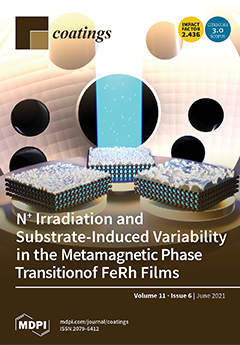The use of chitosan and chitosan composite coatings for the preservation of fruits and vegetables during storage is attracting increasing attention. In this study, a chitosan-based edible coating, as well as a second chitosan-based edible coating containing salicylic acid (CTS + SA), a
[...] Read more.
The use of chitosan and chitosan composite coatings for the preservation of fruits and vegetables during storage is attracting increasing attention. In this study, a chitosan-based edible coating, as well as a second chitosan-based edible coating containing salicylic acid (CTS + SA), a third containing nanosized titanium dioxide particles (CTS + TiO
2), and a fourth containing a combination of these two (CTS + SA + TiO
2) were evaluated in terms of their effects on the postharvest quality of blackcurrant fruit during storage at 4 °C. The results showed that compared with the other three treatment groups, the blackcurrants treated with CTS + SA + TiO
2 underwent the smallest changes in weight loss, total soluble solids, titratable acidity, vitamin C, and total anthocyanin content, and retained the highest total flavonoid content. This combined treatment significantly inhibited polyphenol oxidase activity during storage, and the CTS + SA + TiO
2 samples also displayed the lowest malondialdehyde content. These results, thus, indicate that the CTS + SA + TiO
2 composite coating could maintain the nutrient composition of blackcurrants, thereby playing a significant role in preserving the quality of this fruit at 4 °C.
Full article





